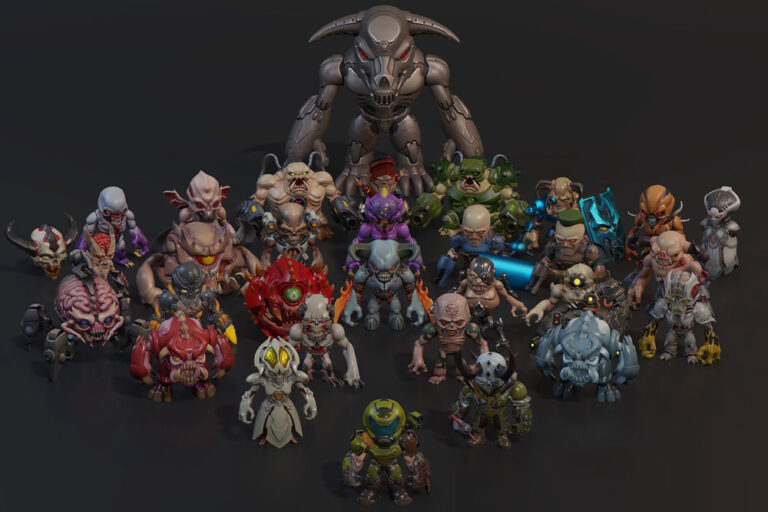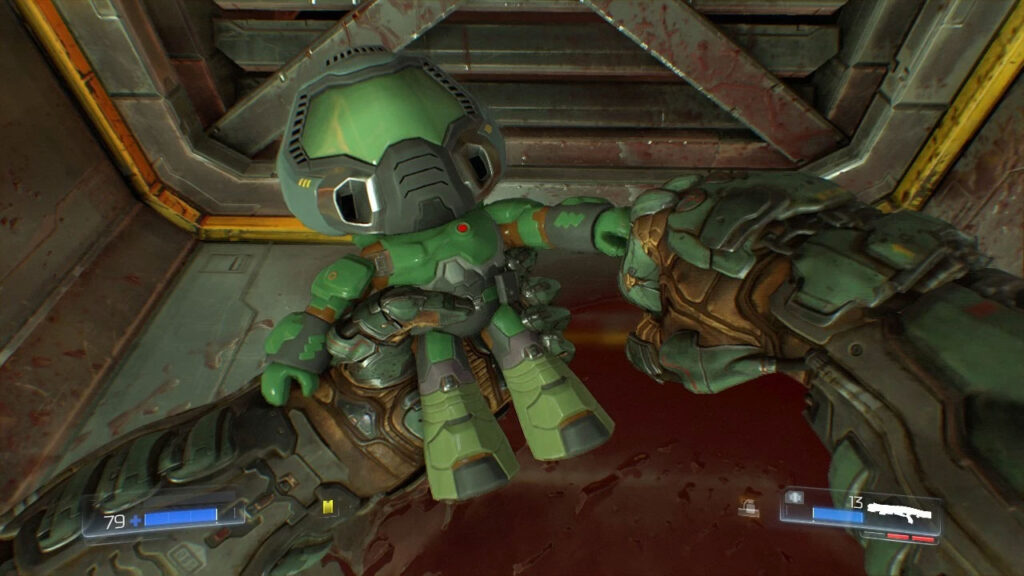Since its creation in 1993, the Doom franchise has gone through a dramatic transformation. From simple secret areas it evolved into complex collectible systems which reward exploration and mastery.
This evolution is a reflection of not only the technological advances, but also the changing expectations of players and game design philosophy. Resources like Ingametor.com offer detailed guides to help players complete their favorite Doom games.
Since John Romero created the first levels in the original Doom game, the concept of hidden content has been an important part of the Doom franchise. What started as simple secret areas, has evolved into a sophisticated collectible system that serves multiple purposes, including extending gameplay, character progression, rewarding players who explore the entire game world, and rewarding those dedicated to exploring every corner.
Doom is a first-person shooting game that was developed and published in 1993 by id Software. This is the first game in the Doom series.
The series, which began with humble beginnings has challenged players to go beyond the obvious, creating hidden content that still defines the franchise to this day.
The Foundation: Classic Doom Secret Areas
Secret areas were a fundamental part of the original Doom, and its sequel. This concept would continue to influence game design decades later. The PC Doom/Ultimate Doom secret areas were spread throughout each episode.
This created a parallel layer for players who wanted to explore outside the main path. These secret areas usually contained powerful weapons, health items, or ammunition that could give players a significant advantage in combat.
Doom 2’s gameplay is very similar to that of its predecessor. However, the level design has been upgraded from the original Doom. The levels are larger, sprawling and non-linear.
They reward people who stray from the main path with collectibles. This design philosophy set the template for later Doom games where exploration was as important as combat.
Classic games had hidden passages, hidden walls and secret teleporters that players needed to be aware of. The early secret areas could only be discovered by trial and error.
Players learned to identify subtle visual cues, such as wall textures or unusual light patterns. Discovering these secret areas gave players a feeling of accomplishment beyond just completing the levels.
The Modern Renaissance: Doom 2016 Collectibles System
The 2016 rebooted version of Doom revolutionized collectibles by introducing an organized and varied approach to hidden contents. Each Collectible has a slightly different animation when the Marine picks it up. When he receives Doomguy he gives a loving fist-bump. This attention to details showed how collectibles evolved from simple power ups to character easter eggs celebrating the franchise’s past.
Doom (2016) is a reboot of the Doom franchise, featuring relentless speed, stylish violent, and secret-filled maps. This guide will cover every mission, whether you are here to collect the collectibles or simply want to upgrade your weaponry to its fullest strength.
This modern approach to collecting collectibles has integrated them into the progression system of the game, making them essential and not optional.
In the 2016 version, collectibles included Doomguy figurines as well as data logs and upgrade points.
Each collectible served a specific purpose: figurines were nostalgic nods to id Software’s gaming past, data logs enhanced the game’s lore and upgrade points improved the player’s abilities. This multi-tiered structure created a variety of exploration motivations, appealing to different player preferences and playing styles.
Doom Eternal: Expanded Collectible Mechanics
Doom Eternal builds on the foundation of its predecessor, while adding new challenges and complexities. I used guides to replay levels and collect collectibles.
It was a lot of fun to replay levels with cheats enabled. This quote shows how collectibles have become an integral part of the replay value in modern Doom games.
The game added more complex puzzles and hiding places that required players use their entire arsenal of movement skills.
Collectibles weren’t just hidden behind secret walls, but also required creative thinking, complex platforming, and environmental manipulation to get them. This evolution was a result of the Doom Slayer’s increased movement complexity and the vertical level design.
Eternal expanded the collectibles lore-building aspects, with codex entries revealing extensive backstory on the game universe. These collectibles had two purposes: they rewarded exploration and helped to build a deeper understanding about the mythology of the game.
The inclusion of collectibles in the story progression was a major departure from earlier games that were purely mechanical.
The Dark Ages: A New Chapter in Collectible Design
You can get a 100% rating for each chapter. Even the tutorial mission has secrets. Doom: The Dark Ages follows the tradition of the Doom franchise in hiding secrets within its levels. However, it does so with a medieval theme that reflects the game’s tone and setting.
The game appears to have maintained the extensive collectible system of previous modern games while adapting it for the medieval hellscape setting. Toy Collector – Collect the figures. Total Mastery: Complete the Weapon Mastery challenges. Supreme Matador: Complete the campaign, regardless of its difficulty.
Perfectionist: 100% completion of the game. These achievements categories show how collectibles are now an integral part of measuring player progress.
Players who want to collect every item in the challenging levels of Doom: The Dark Ages, Chapter 6 Siege Part 1 will find detailed guide.
The Cultural Impact and Community Response
The development of collectibles within Doom has elicited diverse reactions among the gaming community. After a particularly intense battle, you can cool down and prepare for the following one by searching your surroundings for goodies and treasures.
All of these things are what make Doom memorable to me. This perspective shows how collectibles can be used as pacing devices to provide relief in between intense combat scenes.
Not all players are fans of the collectible hunt. Others see it as an essential part of the Doom experience. This division reflects the broader discussion in game design regarding optional content and completionist gaming.
Collaboration and extensive guides have resulted from the community’s commitment to cataloguing and finding every collectible. Players create maps and databases to help other players complete the game.
This community engagement shows how collectibles are more than just a game mechanic. They’re now focal points for knowledge sharing and community interaction.
The Dark Ages’ ability to maintain its core identity while evolving is demonstrated by the transformation of collectibles in Doom from simple secret areas to complex multi-layered systems. Each iteration builds on previous foundations, while introducing concepts that reflect current game design trends and players expectations.
Collectibles are likely to remain an important element as the franchise evolves, connecting players to Doom’s rich history and continuing development. They provide both nostalgia and new challenges for the next generation of demon-slayers.






0 Comments